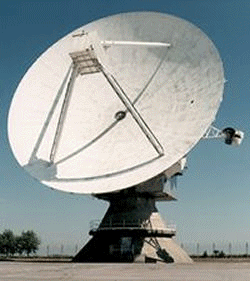Dataset
CWAVE: Advanced Along-Track Scanning Radiometer (AATSR) measurements from Envisat
Update Frequency: Not Planned
Latest Data Update: 2005-02-16
Status: Completed
Online Status: ONLINE
Publication State: Published
Publication Date: 2007-03-09
Download Stats: last 12 months
Dataset Size: 140 Files | 904MB
Abstract
The Cloud and Water Vapour Experiment (CWAVE) was a measurement campaign at the CCLRC-Chilbolton Observatory; it was supporting associated with two EC FP5 projects, CLOUDMAP2 and CLOUDNET. A wide range of satellite and ground based instruments measured a variety of atmospheric properties ranging from cloud parameters to water vapour. In addition, the measurements coincided with the results from a reduced resolution Unified Model (UM) run by the Met Office. This dataset contains advanced along-track scanning radiometer measurements.
Citable as: Council for the Central Laboratory of the Research Councils; Poulsen, C.A. (2007): CWAVE: Advanced Along-Track Scanning Radiometer (AATSR) measurements from Envisat. NCAS British Atmospheric Data Centre, date of citation. https://catalogue.ceda.ac.uk/uuid/47adcb7e332ddfab9e9be9b43ea6ac1f/
Abbreviation: Not defined
Keywords: CWAVE, AATSR
Details
| Previous Info: |
No news update for this record
|
|---|---|
| Previously used record identifiers: |
http://badc.nerc.ac.uk/view/badc.nerc.ac.uk__ATOM__dep_11734610616416964
|
| Access rules: |
Restricted data: please submit an application using the REQUEST ACCESS link for access.
Use of these data is covered by the following licence(s): https://artefacts.ceda.ac.uk/licences/specific_licences/cwave.pdf When using these data you must cite them correctly using the citation given on the CEDA Data Catalogue record. |
| Data lineage: |
Data were collected by the Chilbolton Observatory and prepared by facility staff before submission to BADC. |
| Data Quality: |
Data are checked by facility staff during preparation of data for archival
|
| File Format: |
Data are netCDF formatted
|
Related Documents
| ATSR Quick Guide |
Process overview
This dataset was generated by a combination of instruments deployed on platforms
and computations as detailed below.
Instrument/Platform pairings
| Advanced Along-Track Scanning Radiometer (AATSR) | Deployed on: Envisat |
Mobile platform operations
| Mobile Platform Operation 1 | Mobile Platform Operation for: Envisat |
Computation Element: 1
| Title | DETAILS NEEDED - COMPUTATION CREATED FOR SATELLITE COMPOSITE. deployed on Envisat |
| Abstract | This computation involved: DETAILS NEEDED - COMPUTATION CREATED FOR SATELLITE COMPOSITE. deployed on Envisat. In March 2002, the European Space Agency launched Envisat, an advanced polar-orbiting Earth observation satellite which provides measurements of the atmosphere, ocean, land, and ice. The Envisat satellite has a payload of 10 instruments that will ensure the continuity of the data measurements of the ESA ERS satellites. Envisat data supports earth science research and allows monitoring of the evolution of environmental and climatic changes. <div property="cedacat:introduction"> <div class="introduction">Introduction</div> <p>Envisat flies in a sun-synchronous polar orbit of about 800-km altitude. The repeat cycle of the reference orbit is 35 days, and for most sensors, being wide swath, it provides a complete coverage of the globe within one to three days. The exceptions are the profiling instruments MWR and RA-2 which do not provide real global coverage, but span a tight grid of measurements over the globe. This grid is the same 35-day repeat pattern which has been well established by ERS-1 and ERS-2.</p> <p> In order to ensure an efficient and optimum use of the system resources and to guarantee the achievement of the mission objectives Envisat reference mission operation profiles are established and used for mission and system analyses to define the instrument operational strategies, the command and control, and the data transmission, processing and distribution scenarios. </p> <p> Mission and operation requirements <br /> </p><ul> <li>Sun-synchronous polar orbit (SSO): Nominal reference orbit of mean altitude 800 km, 35 days repeat cycle, 10:00 AM mean local solar time (MLST) descending node, 98.55 deg. inclination. </li><li>The orbit is controlled to a maximum deviation of +/- 1 km from ground track and +/- 5 minutes on the equator crossing MLST. </li><li>Recording of payload data over each orbit for low bit rate (4.6 Mps) on tape recorders or solid state recorder (SSR). </li><li>High rate data (ASAR and MERIS) to be accessible by direct telemetry or recording on SSR. </li></ul> Payload: <ul> <li>ASAR - Advanced Synthetic Aperture Radar </li><li>MERIS - MEdium-spectral Resolution, Imaging Spectrometer </li><li>AATSR - Advanced Along Track Scanning Radiometer </li><li>RA-2 - Radar Altimeter 2 </li><li>MWR - MicroWave Radiometer </li><li>GOMOS - Global Ozone Monitoring by Occultation of Stars </li><li>MIPAS - Michelson Interferometer for Passive Atmospheric Sounding </li><li>SCIAMACHY - Scanning Imaging Absorption Spectrometer for Atmospheric Chartography </li><li>DORIS - Doppler Orbitography and Radio-positioning Integrated by Satellite instrument </li><li>LRR - Laser Retro-Reflector </li></ul> <p /> </div> |
| Input Description | None |
| Output Description | None |
| Software Reference | None |
| Output Description | None |
- var_id: LatLon
- var_id: albedo
- var_id: angles
- var_id: cost
- var_id: data
- var_id: error
- var_id: flag
- var_id: iteration
- var_id: phase
- var_id: rad error
- var_id: radiances
Co-ordinate Variables
Coverage
Temporal Range
Start time:
2003-05-31T23:00:00
End time:
2003-07-30T23:00:00
Geographic Extent
90.0000° |
||
-180.0000° |
180.0000° |
|
-90.0000° |
Related parties

